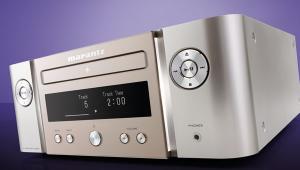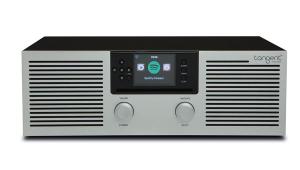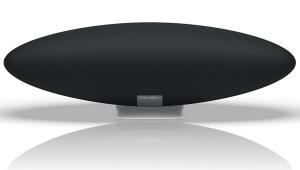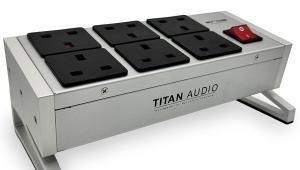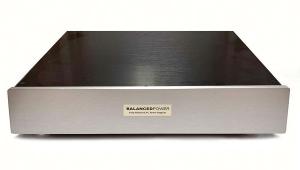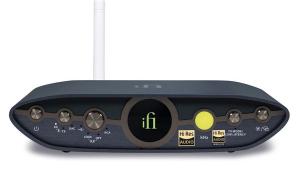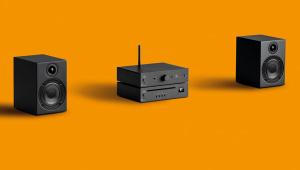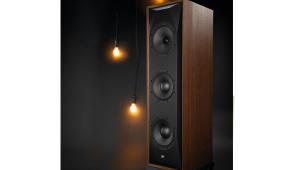Plato Class A

 Perhaps one of the biggest compliments I could pay an audio product on loan for test would be to tell whoever came to collect it they were most welcome to take it away but first they’d have to grapple it from my white-knuckled bear hug grip. Although a tad Walter Mitty, the thought did mess with me come the time to give back the Entotem Plato last year (HFC 400). I think the problem was that this early example of arguably the ultimate one-size-fits-all media server had settled itself so comfortably into my hi-fi world, it was only a matter of time before it slipped on a pair of fluffy slippers and started smoking a pipe. Its sudden but inevitable departure hurt. There were teething glitches with its Android control app (now sorted) that drove me up the wall. But the densely packaged machine that lurked inside a footprint no bigger than a 15in laptop took sonically acceptable multi-tasking to the next level, with capacity and flexibility to spare. I reckoned it had as much right as any to call itself the future.
Perhaps one of the biggest compliments I could pay an audio product on loan for test would be to tell whoever came to collect it they were most welcome to take it away but first they’d have to grapple it from my white-knuckled bear hug grip. Although a tad Walter Mitty, the thought did mess with me come the time to give back the Entotem Plato last year (HFC 400). I think the problem was that this early example of arguably the ultimate one-size-fits-all media server had settled itself so comfortably into my hi-fi world, it was only a matter of time before it slipped on a pair of fluffy slippers and started smoking a pipe. Its sudden but inevitable departure hurt. There were teething glitches with its Android control app (now sorted) that drove me up the wall. But the densely packaged machine that lurked inside a footprint no bigger than a 15in laptop took sonically acceptable multi-tasking to the next level, with capacity and flexibility to spare. I reckoned it had as much right as any to call itself the future.
The really clever thing? It could handle the past, too. Let’s recap. Rewind a few years. It’s 2013 and four music lovers from Derby with shared expertise in computer data storage have taken a long, hard look at the state of the media server art. It’s undeniably impressive, a sector populated with single-box solutions that can process and disseminate separate audio and visual digital media strands to multiple rooms with complete flexibility, usually via a control app. But the four friends reckon they can do better. They’ve designed a completely self-sufficient player that serves not just the requirements of the latest digital tech but also legacy analogue kit such as a turntable or cassette deck, allowing LPs and tapes to be copied on the fly and archived as hi-res digital files. A box, then, that ticks all the boxes. They called themselves Entotem and their new baby Plato.
The basic hardware, wrapped in a fashionably plain, button-free, solid colour case with a touchscreen display on the front panel, consisted of preamp and delete-option 45W per channel Class A/B power amp (meaning you could substitute a power amp of your choice), a 2TB hard drive, DAC and ADC modules for video and 24-bit/192kHz hi-res audio recording and playback and a MM/MC phono stage. It would connect to any regular home/office network, automatically look up other UPnP (Universal Plug and Play) devices on the network and access their audio/video content, supporting FLAC, ALAC, MP3, m4a, PCM/WAVE and AAC on the audio side and .mov, mpeg2, mpeg4, H263 and H264 video files. There were four analogue inputs, four digital inputs, two digital outputs and a pre-out plus sockets for HDMI output, Ethernet network connection and three USB ports. Entotem’s MD Martin Boddy rather simply summed it up thus: “Potential game changer.”
With a healthy order book and a clutch of awards on the sideboard, the concept and its high-quality execution have proved popular. But from the start it was always intended that Plato, modular in design, would be an evolving platform. The next phase, the Plato Class A, has landed and, as with the original, HFC is its first port of call.
As the name indicates, the quest for even better sound quality has resulted in a new power amp that runs mainly in Class A, albeit with a clever technical twist. The original Plato (Class AB) continues in production, selling for £3,600, or £2,700 sans power amp. At £3,999, the Class A option is a modest chunk more expensive, but then it is targeting true, high-end, audiophile sound quality without the need to plug in a third-party power amp.
Coping with the extra heat generated by pure Class A amp designs would have required a complete rethink of the chassis topology. Not ideal. Entotem’s way round this, which it believes to be currently unique in the industry, involves a new way of biasing the output transistors to accrue the crossover distortion eliminating benefits of Class A while greatly improving efficiency. Plato does this by sampling the input signal in the digital domain and is therefore able to continuously modify and scale the output transistor biasing, allowing it to stay Class A for the longest time, but without getting so hot. The harder you push the volume, the less Class A output there is in any given signal but because it’s material dependent, it’s considerably more than with a conventional Class AB design. To optimise and finesse this, a new feature has the ability to impedance match the amp with the speakers being used. All of that said, some extra heat is inevitable, so along with a few other hardware changes the size of the base plate has been increased to help dissipate it. A PCB layout modified to eliminate interference and the upgrading of several key components to ‘support the highest audio quality’ completes the picture on the inside.
Other developments include the roll out of an iOS control app earlier in the year, which is good news for Apple iPhone and iPad users. Even though the first release doesn’t have all the features of the Android version, a second release due later in 2016 will match functionality. All of which should make it a breeze to access the newly integrated high-resolution download service from HighResAudio. This flags up as an additional main menu option within the control app. Once an account has been opened, the user can search for hi-res albums and tracks and, purchase completed, they’re stored directly to the media library from where they can then be selected for local play or streaming to whatever multi-room wireless speaker setup.
Plato’s appealing function as a repository for all things ‘entertainment’ is further enhanced by the ability to copy music and video stored on it to any other home network device such as a phone or tablet running the control app. Currently this only works with Android, but will feature on the second release of the iOS app later in the year. As before, when new music is imported – whether digital or analogue – the Gracenote database is searched at six-second intervals and the matching track metadata (song, artist and album name) attached to the recording. Things have been taken further with the introduction of a ‘Mood’ grid, which tags additional information from Gracenote to create mood-based playlists.
Operationally, the Android control app, if not perfect, is no longer the hit-and-miss affair it was before and the edges of the touchscreen front panel have been re-profiled so that it’s easier to make fingertip contact with icons at the edge of the display.
Sound quality
I really liked the sound of the first ‘Class AB’ Plato, which for a claimed 45 watter, certainly seemed to have the minerals to drive my resident DALI Rubicon 6 floorstanders (HFC 399) to within an inch of flapping the curtains while possessing a fine sense of transparency, rich tonal textures and foot-tapping rhythmic energy. More than good enough given the type of product, you might think. But did I mention the guys behind it are music lovers? Solid-gone music lovers? Good enough is never enough.
So what improvements does the Class A bring to the party? Time to wrestle the big £3k Rubicons into position again. The front end has changed a little since then, but since we’re investigating just how capable the Plato’s new amp is, it’s all to the good. Thoughtfully, a handful of hi-res HighResAudio tracks has already been loaded into the media library, a Questyle QP1R DAP (HFC 413) is on standby to inject more and, for CD, Cyrus’ £1,750 CD Xt Signature transport (HFC 386) connected to the Plato’s internal DAC via a 2m run of Nordost Blue Heaven digital interconnect is just the job. And as our review sample has swapped the optional Speakon speaker connections that are shown on page 47 for banana plug terminals, it’s Nordost Red Dawn doing the connecting between amp and speakers.
As before, it’s a sound you can live with, a sound that’s beautifully even-handed and musically compliant. But, this time, it doesn’t just ‘hit the ground running’, it nails your attention from the start. It’s special the second air pushes through Gregory Porter’s caramel vocal chords on the over air-played but nevertheless exceptional Consequence Of Love from Take Me To The Alley. Oh, the satiny tones, the air, the resolution of those vanishingly small but vital ambient cues.
But most of all, the sheer, solid presence of Porter. His vocal span is given full reign, the lower registers a weight and authority that’s downright naughty. The soundstage is wider and deeper than I remember the original Plato’s being, too. It’s as if a layer of previously unnoticed haze has been lifted from the sonic landscape, making tonal colours cleaner and more intense, instrumental intricacies easier to follow and understand.
Even good old Jeff Lorber on vinyl, his brand of early career funk already turned up to 11 via the original Plato, seems to have found an extra gear and off-loaded some of the corn. A kind of magic, surely?
Conclusion
What can I tell you? I was blown away by the original Plato, but I like the Class A even more. If you’re prepared to take the plunge, it can’t help but define your music and video leisure downtime and, through sheer addictive attraction, probably leverage you some more. Yes, 4K compatibility and a drive to play/rip CDs would be nice but, as it stands, the Plato Class A is the best-sounding do-it-all box of delights there is out there. Warmly recommended. DV
DETAILS
Product: Plato Class A
Price: £3,999
Origin: England
Type: 2TB music/video server system
Weight: 15kg
Dimensions (WxHxD) 370 x 136 x 301mm
FEATURES
● Quoted power output: 2x 50W (RMS)
● Audio formats: FLAC; ALAC; AAC LC/PLUS; MP3; VORBIS; m4a; PCM/WAVE; AIFF
● 24-bit/192kHz recording from analogue sources
Distributor: Convert Technologies
Telephone: 01332 291972
Website: www.convert-av.com
 Read the full reveiw in issue 414
Read the full reveiw in issue 414
 |
Inside this month's issue:
Ruark R610 music system and Sabre-R standmount speakers, PMC twenty.23i Active, floorstanders, English Acoustics Downton preamplifier, Bluesound NODE ICON preamp/streamer, Ortofon Concorde Music Blue MM cartridge and much, much more
|




